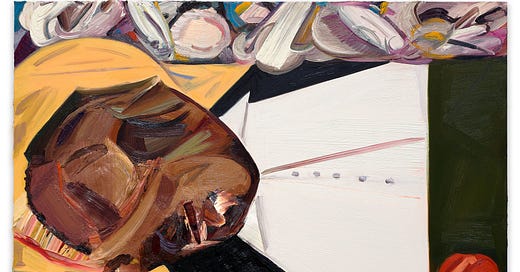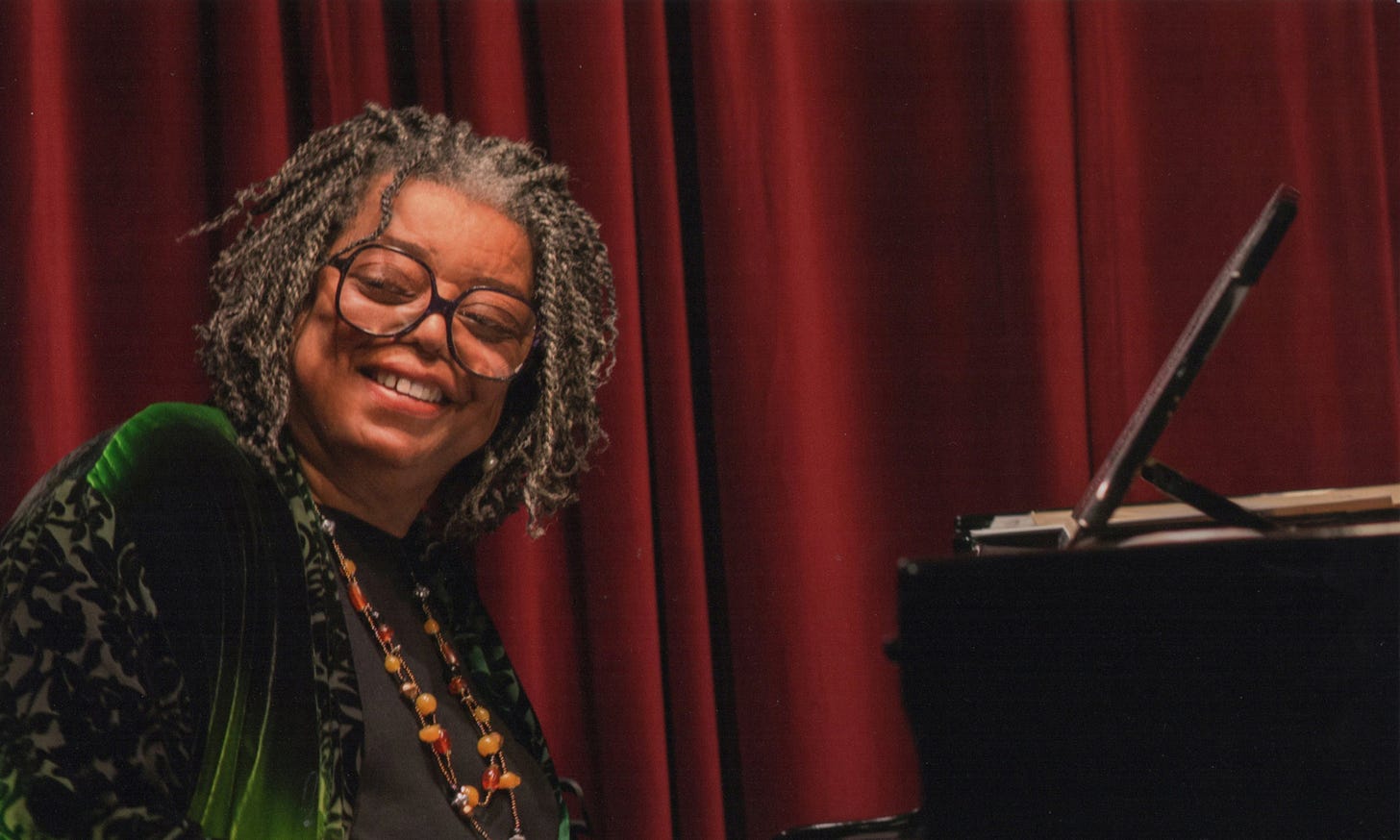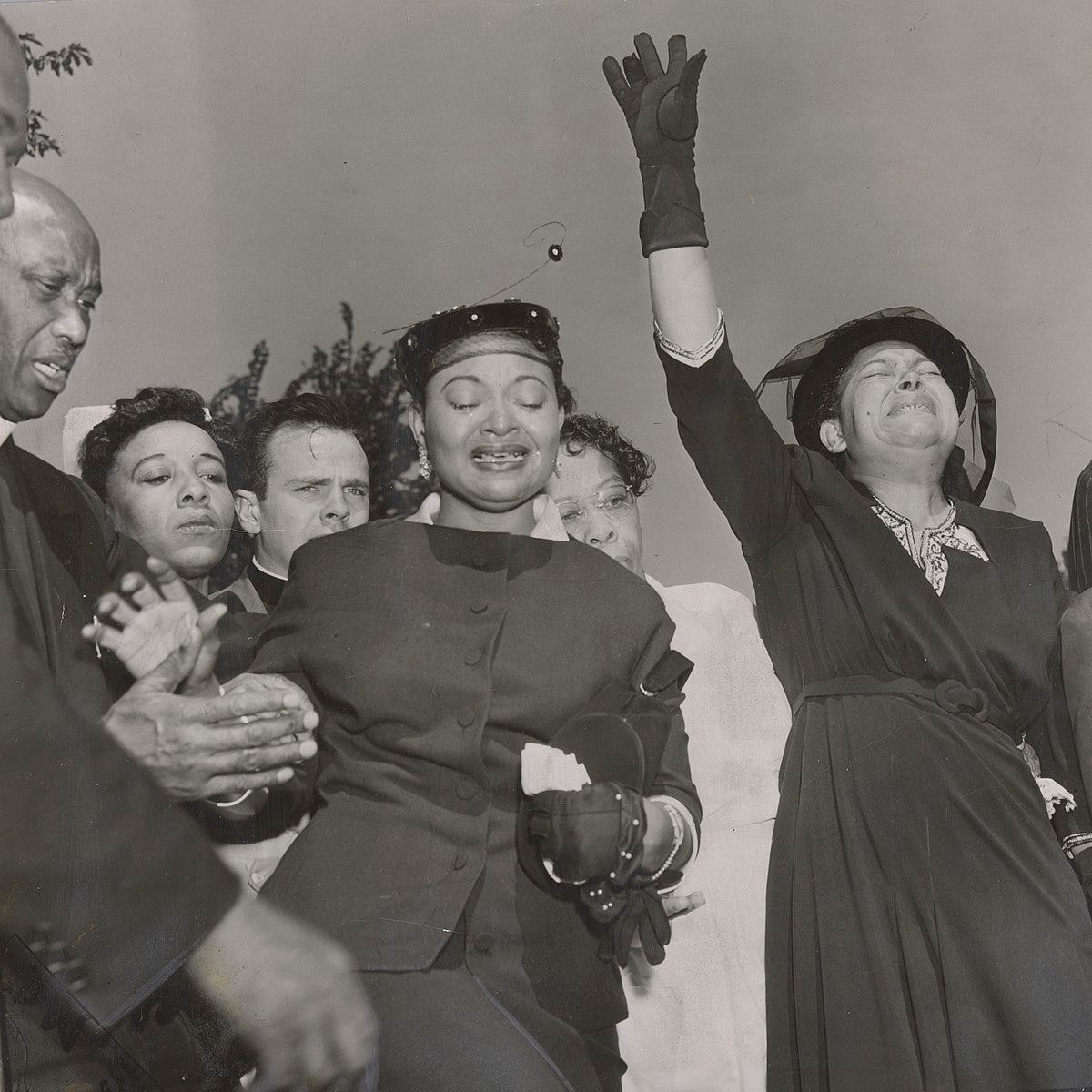The Anti-Racism of Fools: It’s anything that divides us rather than unites us
Emmett Till, the 14 year old boy killed by white Southerners, is once again at the center of controversy over who gets to tell his story. This time, an opera by two women, one Black, one white.
We’ve heard this opera before.
A white artist, moved to express their own outrage, anguish, guilt, and shame about racism and injustices done to Blacks, creates a work designed to communicate those feelings. Then the backlash comes. Someone speaks out, demanding to know how the white artist can dare to “appropriate” the suffering of Black people when they do not possess the lived experience that “qualifies” them to do so. There are demands, often accompanied by petitions, that the work be taken down or cancelled. Since the first to speak out is usually a person of color claiming to speak for all African-Americans, white liberals quickly jump on the bandwagon. After all, if a person of color makes a statement, it must be right and true; and even if it is not, many white liberals are more worried about being accused of racism than actually doing something about it.
We saw this in 2017, when the American painter Dana Schutz, who is white, exhibited a work at the Whitney Museum Biennial in New York, based on a photograph of Emmett Till in his coffin. Till, of course, was the 14 year old Black boy who was killed and mutilated by white southerners in 1955. His mother, Mamie Till-Mobley, insisted that the coffin be kept open during the funeral, so that his horribly mutilated face would be fully visible. As she famously said, “I wanted the world to see what they did to my boy.” Not surprisingly, the two white men accused of the crime, facing an all-white jury in a Mississippi courtroom, were quickly acquitted of all charges; soon after, protected by double jeopardy, they admitted they had done it.
Schutz’s painting immediately drew protests from some Black artists and activists, although others defended it against demands that it be taken down. Both Schutz and the museum defended the work, which stayed up. Schutz told The Guardian:
“I don’t know what it is like to be black in America, but I do know what it is like to be a mother. Emmett was Mamie Till’s only son. The thought of anything happening to your child is beyond comprehension.”
In an interview with The New Yorker, Schutz explained that the work originated as a response to the killings of Black men by police. It’s worth reading what she had to say:
Somewhat hesitantly, she also said that she had been thinking a lot about Emmett Till, the fourteen-year-old whose abduction, torture, and murder by white Mississippi racists in 1955 kept coming up in news stories about the killings of Trayvon Martin and other African-American boys. Two men, Alton Sterling and Philando Castile, had been killed in separate police shootings two weeks earlier. In the current climate of political and racial unrest, Emmett Till seemed like a risky subject for a white artist to engage with. “I’ve wanted to do a painting for a while now, but I haven’t figured out how,” she said. “It’s a real event, and it’s violence. But it has to be tender, and also about how it’s been for his mother. I don’t know, I’m trying. I’m talking too much about it.” In a later conversation, she said, “How do you make a painting about this and not have it just be about the grotesque? I was interested because it’s something that keeps on happening. I feel somehow that it’s an American image.”
It took courage for Schutz to stand her ground and not immediately give in to the campaign against her work of art. I’m sure the fact that some Black artists and activists came forward to defend the work, and certainly Schutz’s right to display it, helped her find that courage. But courage it was.
This week, we’ve seen a replay of this basic misguided scenario. As I write, more than 13,000 people have signed a petition demanding the cancellation of an opera about Emmett Till to be staged at John Jay College in New York on March 23 and 24. The opera, “A New American Opera: Emmett Till,” is the work of two women: A white activist and playwright, and a Black composer. Most of the actors are African-American. The Black composer, Mary D. Watkins, has strongly defended the collaboration; the white librettist, long-time activist Clare Coss, worked with Watkins for eight years to produce the opera.
The opera is based on a play that Coss wrote some years ago, “Emmett, Down in My Heart,” and that could be where the trouble began. Coss created a fictional character, a white teacher, who is apparently transformed by the horrific murder of Emmett Till. That creative license led the petitioners to claim that the opera was all about whites ventilating their feelings of guilt:
“Clare Coss has creatively centered her white guilt by using this play to make the racially motivated brutal torture and murder of a 14-year-old child about her white self and her white feelings.
Telling the story from the perspective of a fictional progressive white woman shows that Clare Coss is more concerned with showing the audience that "not all white people are bad" than she is with the ongoing fight for racial justice.”
What’s remarkable about these statements, signed by more than 13,000 presumably intelligent people of all colors, is there is no evidence they are true. If they were, I doubt that Mary D. Watkins, whose own works over many years have focused on the Black experience (they include an opera about civil rights activist Fannie Lou Hamer), would have teamed up with Coss. Unless, that is, Watkins is some kind of Uncle Tom (Aunt Tomasina?) whose purpose as a composer is to make white people feel better about themselves. Indeed, by demanding the opera’s cancellation, the petition signers—no matter what color they are—are actually implying that Watkins is some kind of dupe of this white lady, thus playing into racist stereotypes.
There is some interesting history behind efforts to tell the story of Emmett Till. Back in the 1950s, television writer Rod Serling, who would later create “The Twilight Zone,” decided to write a teleplay for the popular “U.S. Steel Hour” about Emmett Till’s murder. When word got out, thousands of white supremacists wrote in, demanding that the production be “cancelled.” Local stations and advertisers insisted on massive changes in Serling’s script that left it gutted of any relationship to what had really happened. The Smithsonian, in a fascinating article about the episode, described the end result:
When Serling's teleplay,“Noon on Doomsday,” finally aired on April 25, 1956, any hint of the South was removed from the plot; not even a Coca-Cola bottle could appear, lest viewers invoke the idea of the region. Instead, the opening crawl made clear that the story was set in New England. (Really, all that mattered was that it was set far away from the South: “I’m convinced,” Serling said in the Wallace interview, “they would have gone up to Alaska or the North Pole…except I suppose the costume problem was of sufficient severity not to attempt it.). The victim was now depicted as an unknown foreigner. “Further,” Serling fumed, “it was suggested that the killer in the case was not a psychopathic malcontent but just a good, decent, American boy momentarily gone wrong…”
The South was removed, Emmett Till was removed, white supremacists were removed—the pity is that Serling agreed to air the program at all. But at least he, a white man, tried to tell the story, at a time when Black TV writers and even Black actors were practically nonexistent. Serling was moved to do something, by saying something, about racism, just as, in the following decade, many thousands of whites were when they joined the Civil Rights Movement and marched alongside African-Americans (some even gave their lives.)
So let’s get to the point.
When George Floyd was murdered by police officer Derek Chauvin, hundreds of thousands—perhaps millions—marched for weeks in every major city in the United States and even in other countries, protesting this racist killing. The multitudes included people of every hue. Whites, along with people of color, came out to express their outrage and their solidarity with African-Americans, who are the target of police violence, open racism, microaggressions, and every other kind of abuse, every day. No one said that whites had no right to march because they did not have the lived experience of Black people. One might even say that they had the lived experience of being white and being suckered into thinking that made them privileged. It was understood that multi-racial solidarity is a good thing, not a bad thing, and that divisions between us are bad, and unity is good—not only in the interests of fighting racism, but in the common interests of all.
(I have written before about the evidence that racism hurts both people of color and whites, even if not equally, and cited the work of a Black scholar, Heather McGhee, to back that up.)
In the two cases I discuss above, white artists are also trying to express their solidarity with the struggle of African-Americans against injustice. There is no evidence, at least in these examples, that the whites are trying to “appropriate” the stories of Black people or doing anything that prevents Blacks from telling their own stories. And what if a white artist did try to express their “white guilt” about the atrocities that racism and racists have perpetuated? Don’t we want whites to feel guilty—or perhaps more constructively, responsible—about racism? Don’t we want them to find ways to express it and even do something about it? That art can lead to action, and action can lead to art, is very well established, historically and in the present.
I have to conclude by saying something about liberal racism. All whites, including me, are racist to some degree. It could not be otherwise given the racist society we have grown up in. A glance at the Senate confirmation hearings of Ketanji Brown Jackson is enough to tell us that open, blatant racism is alive and kicking in the United States today, along with its many more subtle forms. We are immersed in racism, and those who try to deny it are simply living proof that it still exists.
But here’s the thing. As I said at the beginning, in what I admit was a deliberate attempt to be provocative, one subtle form that racism takes is fear of being branded a racist. Indeed, for many or most whites, fear of Black people is an integral part of racism. Liberals know better than to use the “N-word” or engage in racist stereotyping, but that does not stop them from having a patronizing attitude towards African-Americans. That patronizing attitude is, at heart, a defensive crouch. And that attitude often leads whites to think they must go along with anything a Black person says or does, whether or not one agrees with it—and even if different Black people are saying different things, as in the case of Dana Schutz’s painting of Emmett Till, and in the case of the new Emmett Till opera.
White liberals are often afraid to engage in discussion and debate with Blacks about any subject, for fear of saying “the wrong thing.” This often takes the form of putting Blacks on pedestals, or ascribing to them magical powers of wisdom (or other magical powers) in all situations. But as the petition against an opera staged by a Black woman and a white woman demonstrates, sometimes some Blacks can be as silly and misguided—or even as evil—as whites. Both Blacks and whites had to struggle to believe the rape charges against Bill Cosby and R. Kelly, for example. And I doubt many readers think that Supreme Court Justice Clarence Thomas always gets things right. By patronizing African-Americans rather than regarding them as real people with whom one can agree, disagree, or even argue, whites are actually dehumanizing Blacks without realizing it.
So when a Black woman and a white woman get together to stage an opera about the racist murder of Emmett Till, they are doing a good thing. Each, in their own way, is telling Emmett’s story, and the story of his mother, who went on to be an important activist and educator. I don’t dare speak for Mamie Till-Mobley, but I suspect she would have approved.
When Mamie insisted that Emmett’s coffin be left open, she didn’t just want Black people to see his mutilated face, she wanted white people to see it too. She wanted them to feel shame and outrage, of course; but most of all, she wanted them to do something about it. And not just out of guilt, but out of solidarity.








Words of wisdom indeed. It is sad to see such misguided, "politically correct" attacks that undermine the much-needed effort to eliminate racial discrimination wherever it rears its ugly head. As is noted in this piece, the ongoing Senate confirmation hearings of Ketanji Brown Jackson are a disgraceful example of open, blatant racism that unfortunately appeals to too many people in the USA. This is where attacks should be directed!
It is evocative to see the photo of Mamie Till-Mobley, Emmett Till's mother.
I don't know enough to make a comment about whether the cons outweigh the pros with Clare Coss's involvement in this opera.
While I agree that there are some legitimate aspects of the protest, I also observe that effective protests have to translate into meaningful changes toward inclusivity. As well, policies have to truly improve the economic well being and political voice of racialized groups.
Too often, protest efforts translate only superficially to change.
In San Francisco, the Black Lives Matter protests have led to more black people being hired in various San Francisco small businesses, but most tech companies haven't hired and trained black people in significant numbers to make it viable for them to remain living in the city:
https://www.businessinsider.com/being-black-in-silicon-valley-2016-7?op=1
From a city that used to have a population that was about 13% black in the 1960s, they now compose less than 5% of the city's population.
Meanwhile, a lot of the city's issues are focused on other things. We've had a slow streets initiative that mostly benefits very wealthy people. The city has spent months arguing about whether JFK Boulevard in Golden Gate Park should be made car free. People went so far as to argue that this would mitigate climate change. Golden Gate Park is surrounded almost entirely by white and Asian neighborhoods.
This is not to say that liberals don't care about racialized people in San Francisco. It's just that most liberals (white and otherwise), don't spend much time digging down into a detailed understanding of the issues, and support for policies to address those issues, to a degree that would allow significant improvements in the lives of racialized people.
Should the opera go on? If it were cancelled, it probably would mean that some black people would lose their jobs. At the same time, perhaps one issue here is that there are few similar operas with entirely black leads and writers.